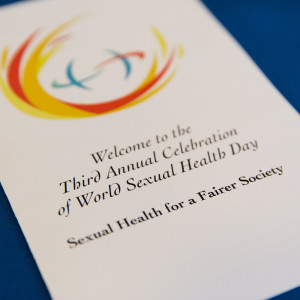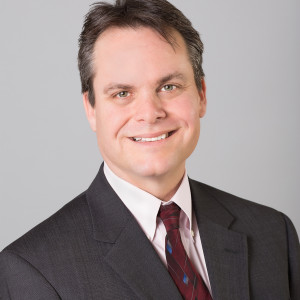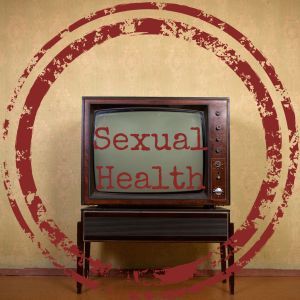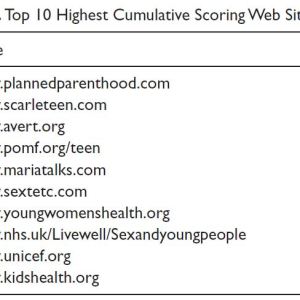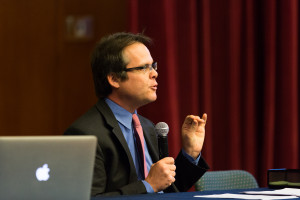 Last week we posted pictures of Bill Taverner’s panel at the 2015 World Sexual Health Day – and today we’re posting his prepared comments on sexuality education in the United States:
Last week we posted pictures of Bill Taverner’s panel at the 2015 World Sexual Health Day – and today we’re posting his prepared comments on sexuality education in the United States:
Thank you so much for including me in today’s event. I am honored to be surrounded by such distinguished colleagues, and to share my perspectives on world sexual health in the United States.
The perspective I bring is through sexuality education. I am the chief editor of the American Journal of Sexuality Education, and my organization, The Center for Sex Education, which is part of Planned Parenthood, and which runs the National Sex Ed Conference. I am also the author or editor of a number of sex education teaching manuals.
I think that the problem that we have here in the United States is in not understanding what sexuality education means. Somehow it has been reduced to the prevention of unplanned teen pregnancy and sexually transmitted infections, and even the prevention of teen sex.
Teens have been having sex throughout history, and yet many adults regard it as a new phenomenon that may have coincided with the emergence of the iPhone.
However, if we look back in the history of teen pregnancy and birth rates in the U.S., for as long as it has been recorded, we see that the highest rates ever occurred in the 1950s. But you wouldn’t know it from talking heads today. We treat teens as if they invented sex, and many of them agree that they have!
The result is competing ideologies on what to do about it. Both focus on narrow aspects of sexuality and sexual health. One side argues that we should teach teens not to have sex until they are married. (Even though research suggests that there is a 10-year gap between the time of first intercourse and first marriage.) This way of “teaching” tells kids, “Don’t do it; don’t even think about doing it” often relies on shame-based messages, scare tactics, and misinformation, and has received nearly $2 billion in U.S. federal funding.
The other approach often called “comprehensive sexuality education,” acknowledges the sexuality of young people and teaches them skills for preventing pregnancy and sexually transmitted infections.
This approach is rigorously researched so that people who implement the programs know that there is an impact, and it is required to be medically accurate.
I am always amused that we have had to specify that sex ed must be medically accurate. I wonder if math teachers ever debate whether or not algebra should be mathematically accurate, or if biology should be biologically accurate.
But there are many people who are just fine with medical inaccuracy. They teach that condoms don’t work; that sex before marriage causes psychological problems; and otherwise teach ideology over science.
The good news is that under the Obama Administration there is now federal funding for these medically accurate, well-researched teen pregnancy prevention programs.
This year, they received $200 million. This is good news, as clearly medically accurate is preferable to medically inaccurate.
But what about the rest of sexuality education? Both the World Health Organization and the World Association for Sexual Health have affirmed that sexual health is more than just the absence of disease, and other problems.
Sexual health involves the ability to experience sexual pleasure. To have healthy relationships. to know what consent means. To know one’s sexual rights, and to respect the rights of others.
Sexuality education is supposed to address gender and sexual orientation; sexual coercion; body image; basic anatomy and physiological response; and so much more.
Sexuality education also needs to acknowledge that sexuality exists before and after high school! Youngest students need to learn the names of their body parts, the qualities of a good friendship, and sexual abuse prevention.
College students can learn about sexual consent, power dynamics in relationships, gender expression and more.
Older adults can learn about how sexual response changes after age 50 or 60 or beyond, and how to adjust their sexual expectations accordingly.
And of course people with intellectual disabilities – often left out of the picture – need all of this.
Sexuality includes so much more than what we currently teach. And it is life-long, and yet we have somehow managed to reduce it to three core messages delivered mainly to high school students:
- Don’t have sex.
- Condoms don’t work. (Yes they do; no they don’t.)
- Contraceptives DO work. (No they don’t; yes they do.)
When the National Sex Ed Conference convenes in December, there will be more than 100 speakers discussing the full range of sexual health topics and audiences.
The vast majority of attendees are NOT receiving federal funding. But they know that sex ed can happen in places beyond the classroom.
Our keynote speaker, Laci Green is a YouTube sensation with more than 2 million subscribers. Laci is engaging young people where they are: online, with hundreds of informative (and yes, medically accurate) videos that keep students’ attention.
We will be presenting awards to the organizations that run two essential websites: Scarleteen.com and SexEtc.org.
The conference will have sessions that address education for young children, and programs for older adults. One special keynote will address racial justice in sexuality education, and that is what I would like to spend a little more time discussing.
Last year, in the middle of our conference, attendees learned that the police officer involved in the choking death of Eric Garner would not be indicted. This did not go over well in a room full of sexuality educators whose work cannot help but intersect with core elements of social justice. Lots of people were angry. Dismayed. They wanted to take action.
At the same time, our field of sexuality education has been wrestling with the problem of racism within our field. Persistent institutionalized racism has resulted in people of color being excluded – whether it be:
- Panels and keynote rosters without a single person of color;
- Sex anthologies and reference books that exclude contributors of color;
- PowerPoint slides that feature all-white photos; or
- Role plays where every character has a Euro-American name.
Even when intentions are good, such as addressing high rates of teen pregnancy or sexually transmitted infections in Black and Latino communities, somehow marginalized populations become, well, marginalized as their sexuality is pathologized and they are reduced to a health indicator, without any discussion of the socioeconomic forces that may result in the negative outcomes.
Poverty, lack of opportunity, hopelessness. These are the core contributors to high rates of teen pregnancy, not race.
And so, a small, but determined group of people at the conference were motivated to action, and created this Solidarity Statement on Racial Justice in Sexuality Education. I would like to read it to you, as I think it speaks directly to today’s theme, Creating a Fairer Society.
(You can watch the original reading of the statement on the National Sex Ed Conference website.)
Three of my distinguished colleagues will be keynoting on racial justice in sexuality education at the National Sex Ed Conference this year.
They will continue the discussion, so that this Solidarity Statement doesn’t remain a just a powerful document. They will call on all sexuality educators to continue to address racial injustice inside our field, and throughout society.
So, that is what I have to say regarding today’s theme, Sexual Health for a Fairer Society.
To me, fairness in sexuality education means:
- Recognizing the sexuality of people throughout their lives.
- Addressing the full range of sexual health topics, not just the scary problems.
- Addressing systemic injustice.
- Including everyone in sexuality education.
Thank you.


